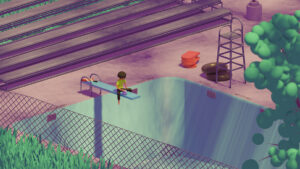
In the pixelated swirl of the internet’s image maelstrom, few artifacts have managed to so viscerally strike a chord as the now-iconic painting of Vincent van Gogh—complete with his fiery beard, intense gaze, and unmistakable Dutch anguish—caught mid-air on a skateboard ramp under the starlit cosmos of The Starry Night. This image, whether discovered on a Reddit scroll or printed on a tee in a skate shop, is not simply a visual punchline. It is a cultural thesis in motion, encapsulating everything from the irreverence of Gen Z humor to the quiet griefs of artistic legacy. Rendered with expressive brush strokes, saturated tones, and satirical fidelity, this anonymous work is not merely “fan art”—it is contemporary myth-making.
The digital afterlife of history’s great artists has increasingly seen their personas reanimated in ways they could never have imagined. Van Gogh, long venerated as the tortured genius of post-Impressionism, here becomes not the self-mutilating melancholic, but a reckless skater, mid-ollie in elbow pads and a Vans logo helmet. The skate deck underfoot isn’t a blank utilitarian board—it’s printed with one of his own works (Irises), further embedding the loop of reference, homage, and playful desecration.
Van Gogh, Immortalized and Re-contextualized
The historical figure of Vincent van Gogh occupies a paradoxical role in art history: a canonical misfit. He is both venerated and pitied, his brilliance romanticized in tandem with his madness. As a symbol, he’s shorthand for misunderstood genius. As an artist, he is a precursor to abstraction and emotion-driven modernism. Yet, in this image, all of that is replaced with athleticism, irony, and contemporary confidence. The Van Gogh portrayed here is not haunted—he’s soaring.
The work is built atop the scaffolding of The Starry Night, arguably Van Gogh’s most famous piece. The swirling celestial drama, with its cobalt and lemon-toned turbulence, becomes the visual backdrop to a suburban skate bowl. This is a deliberate desecration—not out of disrespect, but in the spirit of cultural interpolation. In placing Van Gogh into his own dreamscape and then disrupting it with plywood and polyurethane wheels, the anonymous artist reveals a subtle rebellion: No image, no matter how revered, is sacred from re-imagination.
Van Gogh’s skateboard bears the image of his Irises—a flower piece painted in 1889 while institutionalized in Saint-Rémy. That the painter is shown skating atop his own trauma-laced flora creates an image of irony but also resilience. In a way, he’s now in control, riding over his own story.
Anatomy of the Image: Composition and Visual Language
The power of the image lies in its intentional fidelity to Van Gogh’s own brushwork. Rather than opt for a lazy digital collage or meme-style cutout, the artist painstakingly mimics the oil-on-canvas textures of both Van Gogh’s technique and skate culture’s visual noise. The image feels hand-painted—even if rendered digitally—which imbues it with a layer of authenticity. A breakdown of its construction reveals:
- Color Harmony: The cobalt-rich background from The Starry Night flows uninterrupted into the curvature of the ramp, suggesting Van Gogh’s dream now extends into motion.
- Facial Expression: Van Gogh’s characteristic mournfulness is here modified—not erased, but infused with something more focused. The eyes aren’t anguished—they’re mid-trick.
- Body Dynamics: The pose, an airborne grab over a halfpipe, is accurate to skating form. The inclusion of elbow and knee pads adds a comical but grounding realism.
- Board Detail: The Irises on the deck act like a meta-signature. They reaffirm that this Van Gogh is not just a character in pop culture cosplay—he’s aware of his own place in the canon.
- Graffiti and Ramp Texture: The pool coping and tiles carry tags and wear marks. The attention to subcultural texture suggests insider knowledge. This is not satire from afar—it’s created by someone immersed in skate aesthetics.
Skateboarding as Surreal Performance Art
Skateboarding, often misunderstood as just sport or delinquency, is performance art in motion. It is risk, gravity, failure, and repetition turned into choreography. Its architecture—handrails, stair sets, bowls—functions like a public stage. To place Van Gogh in this realm is to remind us that great art, like great skating, is often born of failure, obsession, and compulsion.
Both Van Gogh and skateboarding share roots in outsider culture. Van Gogh died largely unrecognized, outside of the institutions that now immortalize him. Skateboarders, too, have long existed outside the realm of respectable athletics or design. Their urban interventions are forms of protest—taking corporate plazas, abandoned swimming pools, and government property and turning them into canvases.
This image synthesizes those ideas. It is not “random”—it’s an act of cultural mutual recognition. Van Gogh, once dismissed, is now a god of the gallery. Skaters, once chased from parking lots, now headline Olympics and fashion campaigns. Together, in this image, they ride.
The Art of Remix: A Post-Internet Aesthetic
The viral traction of this image is no accident. It’s a product of what theorists now call remix culture—a creative ecosystem where existing material is reused, reinterpreted, and transformed. Online, cultural value is assigned less through originality than through recognition and novelty. This painting taps into that duality perfectly. It is:
- Recognizable (The Starry Night, Van Gogh’s face, Irises)
- Unexpected (he’s skateboarding mid-air)
- Skillfully executed (painterly style, fidelity to both worlds)
- Easily shareable (fits meme formats but retains artistic dignity)
By these metrics, the work is post-Internet fine art. It may not hang in the Van Gogh Museum, but it lives in timelines and archives with equal—perhaps even greater—reach.
The Anonymous Artist: Street-Level Genius or Ghost Creator?
Despite its fame, the artwork remains unattributed in major art circles. It has appeared across Pinterest, Reddit, Instagram, and Tumblr—each instance devoid of metadata or artist tag. It may have originated from a personal Tumblr post, a digital art subreddit, or even as a piece for sale on Redbubble or Society6.
The signature visible on the tiled ramp in the painting—possibly reading “Emman”, “Emanuel”, or “EMMAN ART”—suggests the creator’s intent to tag the piece like a street mural. Whether this is their actual name or a pseudonym is unclear. It aligns with a DIY graffiti tradition, where creators mark surfaces not to claim ownership, but to be in dialogue with place and culture.
If this artwork is ever definitively attributed, the artist may join the ranks of modern myth-makers who blend commercial irreverence with painterly skill. Until then, it exists as a ghost classic—a beloved artifact floating in the gallery of the cloud.
Legacy in Motion: How the Image Functions Now
Far from just a novelty image, this painting has served multiple functions:
- Fashion Inspiration: Seen printed on apparel, stickers, and posters in art and skate shops.
- Educational Tool: Teachers and professors have used it to introduce younger audiences to Van Gogh with humor and relatability.
- Symbol of Artist Rebirth: Online, it circulates as a metaphor for reclaiming one’s narrative. “Van Gogh rides now,” say fans, suggesting the artist has transcended pain.
In this way, the image has entered modern folklore. Like Shepard Fairey’s Obey or Banksy’s Girl with Balloon, it exists across platforms with or without consent. It belongs to the people. It rides endlessly.
Impression
In a century where the definitions of artistry, ownership, and context are ever-shifting, this anonymous work of mashup mastery becomes more than a joke—it becomes a statement. A 19th-century painter given 21st-century agency. A tortured genius remixed into airborne glee. A night sky turned skatepark. This is not parody—it is cultural alchemy.
The painting tells us: history is not a museum—it’s a ramp. And Van Gogh, in all his misfit brilliance, is still grinding the coping, still rolling, still learning tricks on the edge of madness and expression.
No comments yet.








